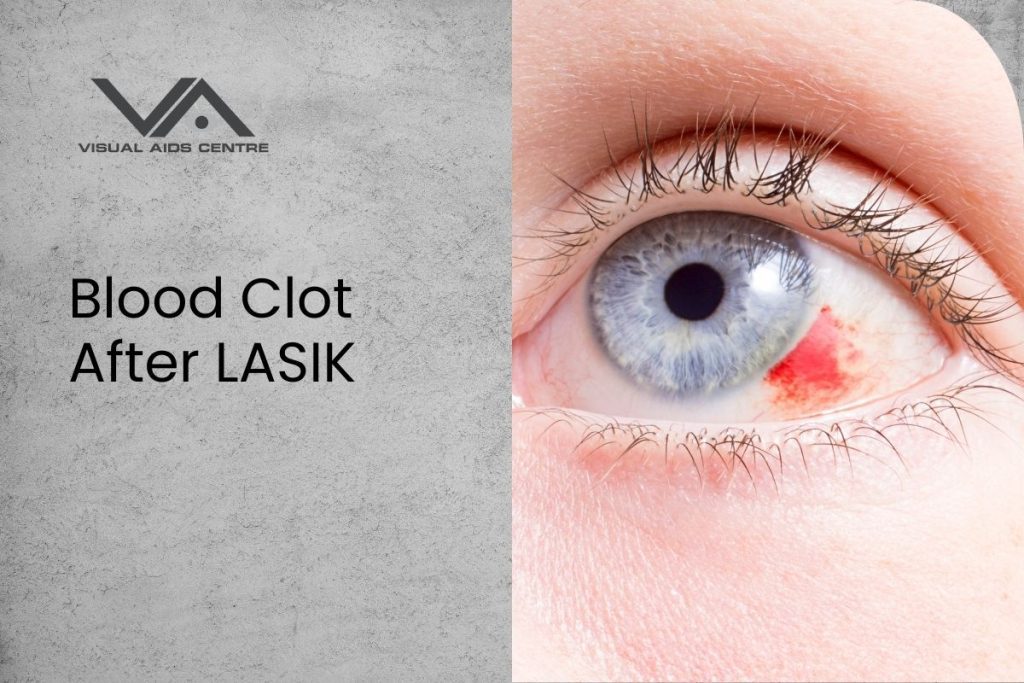Table of Contents
Toggle
LASIK surgery is a common way to fix vision problems. It offers a quick recovery and improves life quality for many. But, like any surgery, LASIK has its own risks.
One risk is getting a subconjunctival hemorrhage, or blood clot, after LASIK. This might sound scary, but knowing the risks is key for those thinking about LASIK.
This article will give LASIK patients important info on surgery risks, like blood clots. It will also help them understand what to expect and how to deal with any issues after surgery.
Understanding LASIK Surgery and Its Risks
LASIK is a surgical procedure with risks like dryness, infection, and subconjunctival hemorrhage. These are important for those thinking about getting LASIK to know.
During LASIK, a thin flap is made in the cornea. This is usually safe but can lead to problems. Blood clots or subconjunctival hemorrhages are possible risks. It’s key to understand these to manage expectations and ensure a smooth recovery.
While LASIK is great for fixing vision issues, it’s important to think about its possible complications. Issues like dry eye syndrome and rare cases of subconjunctival hemorrhage can happen. Knowing these risks helps patients make better choices about their treatment.
It’s also important to know about the risk of blood clotting after LASIK. Though rare, it can affect recovery. Being aware of these risks and taking steps to prevent them can help ensure a good outcome from LASIK surgery.
What Causes Blood Clots After LASIK?
It’s important to know why blood clots might happen after LASIK. These clots or subconjunctival hemorrhages often come from broken blood vessels in the conjunctiva during surgery.
The thinness of these vessels plays a big role. LASIK’s creation of a thin flap in the cornea can sometimes hurt the nearby tissues. This includes the conjunctiva, which can bleed.
Patient-Related Factors
Some things about the patient can make blood clots more likely after LASIK. Taking medications like aspirin or ibuprofen, which thin the blood, is one of them. Doctors usually tell patients to stop these medications before surgery to lower the risk.
Knowing these causes and risks is key for both doctors and patients. By spotting risks early, steps can be taken to make recovery smoother.
To prevent blood clots after LASIK, it’s vital to assess patients carefully before surgery. Also, educating them on how to prepare for surgery is important. This includes managing medications that could raise the risk of bleeding.
Symptoms of Blood Clots After LASIK
After LASIK, it’s key to know the signs of blood clots. This ensures you get help quickly. Blood clots or subconjunctival hemorrhages can be scary, but knowing the signs can ease worries.
A red or dark red patch on the eye is a common sign of a subconjunctival hemorrhage. This patch is usually harmless and doesn’t hurt or affect your vision. It might look bad, but it’s often just a cosmetic issue that heals on its own.
Other than the red patch, you might not notice anything else. It’s like a bruise that your body absorbs over time. Most of the time, these hemorrhages heal without needing treatment.
Key Symptoms to Watch Out For
The red patch is the main sign, but watch for vision changes or eye pain too. Rarely, if you feel pain, see your vision change, or light hurts your eyes, get help right away.
Knowing the signs of blood clots after LASIK helps you manage your expectations. Regular check-ups with an eye doctor are important. They help track your healing and answer any questions you have.
Diagnosing Blood Clots Post-LASIK
Diagnosing blood clots after LASIK surgery is quite straightforward. It mainly involves looking for visible hemorrhages. This is the key sign of a blood clot.
Ophthalmologists can spot blood clots or subconjunctival hemorrhages during routine exams. These exams are key for catching problems early and treating them right away.
Doctors usually check for blood clots during follow-up visits after LASIK. These visits help them keep an eye on how the eye is healing. They can catch any issues, like blood clots, quickly.
Role of Post-Operative Check-Ups
Post-operative check-ups are very important for spotting blood clots after LASIK. They let doctors see how the patient is doing and fix any problems fast. This helps ensure the best recovery.
Treatment Options for Blood Clots
Most blood clots after LASIK don’t need treatment and will go away on their own. But, it’s key to take good care of your eyes after surgery. A subconjunctival hemorrhage, which looks like a blood clot, is usually harmless and doesn’t need special treatment.
It’s important to follow your eye surgeon’s advice on post-operative care. This includes taking any medication as directed, keeping up with follow-up appointments, and avoiding certain activities while you heal.
Good post-operative care helps prevent complications and makes recovery smoother. It’s important to know the signs of any problems and tell your surgeon right away.
Even though you might not need specific treatment for blood clots, it’s vital to have your eyes checked by a professional. This ensures no other issues come up. By understanding the importance of post-operative care, you can lower the risk of problems after LASIK.
Preventive Measures Before LASIK
To lower the chance of blood clots after LASIK, take some steps before surgery. Tell your doctor about any medicines you’re taking.
Some drugs might make bleeding more likely or affect the surgery. Your doctor might ask you to stop these medicines before the surgery.
Pre-Surgery Precautions
Pre-surgery steps are key to avoid problems during and after LASIK. Changing your medicine as your doctor suggests is important.
Also, eating well and not smoking can help your recovery. Make sure to follow your doctor’s advice on wearing contact lenses before surgery.
By following these steps, you can greatly lower the risk of blood clots and other LASIK complications.
Postoperative Care to Avoid Complications
The time after LASIK surgery is very important. Following the right care can lower the chance of problems.
Good care after surgery helps avoid blood clots and makes recovery smoother. It includes several important steps.
Use of Eye Drops
Use artificial tears without preservatives to keep your eyes moist and comfy. Also, antibiotic drops help prevent infection, which is very important after surgery.
Protective Measures
Wear protective shields to keep your eyes safe from rubbing or bumps. This helps prevent the flap from getting dislodged or other issues.
Importance of Follow-Up Care
Seeing your LASIK surgeon for follow-ups is key. These visits help track your healing and catch any problems early, like blood clots. This way, surgeons can fix issues quickly, lowering the risk of lasting problems.
By following care instructions and going to follow-up visits, LASIK patients can greatly lower their risk of complications. This way, they can fully enjoy the benefits of their surgery.
Seeking Professional Guidance
Going through LASIK surgery and its recovery needs careful thought and expert advice. It’s important to know about possible issues like blood clots to have a smooth healing process.
Knowing about blood clot risks for LASIK patients helps manage expectations and spot symptoms early. Healthcare experts are key in giving personalized care and solving LASIK problems.
Getting professional help throughout LASIK can reduce risks and improve results. It’s critical to listen to experienced surgeons and care teams to handle any problems quickly.
Being well-informed and proactive is essential for a good LASIK experience. Patients should feel free to ask questions and seek help when needed. This ensures they get the best care possible.













